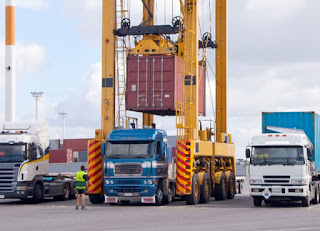The U.S. Army Corps of Engineers has
completed outer harbor dredging at the Port of Savannah, marking the midpoint
of the Savannah Harbor expansion project. The first half of the project
deepened the outer harbor to 49 feet at low tide 56 feet at high tide. The
inner harbor channel will be expanded from its current low-tide depth, 42 feet,
to 47 feet 54 feet at high tide.
The Port of Savannah is already the second
busiest port in the nation for exports. Georgia is currently investing $1
billion per year in transportation projects to widen interstates, add
truck-only lanes and improve trucking routes between ports and interstates so
that cargo may move across our state and the Southeast faster, without adding
to traffic congestion.
The project received $49 million in President
Donald Trump's FY 2018 budget request to Congress. Georgia's congressional
delegation is working to increase funding to $100 million per year, the amount
needed to complete the project in a timely manner.
A study by the Corps of Engineers estimates
that once the project is complete, the deepening of the harbor will result in a
net benefit of $282 million in transportation savings for shippers and
consumers per year. According to the Corps' benefit-to-cost ratio, each dollar
spent on construction will yield $7.30 in net benefits to the nation's economy.
"From a business perspective, any time
you can find an opportunity where every dollar delivers that kind of return,
it's an investment worth making," said Georgia Ports ity G Board Chairman
Jimmy Allgood. "That's a massive benefit for taxpayers, unmatched by any
other maritime infrastructure project in the country."
Over the next 10 years, G will invest
approximately $2 billion in new cranes and terminal infrastructure to handle
expanding cargo volumes.
"In Georgia, we're making the
investments necessary to support U.S. producers well into the future,"
said G Executive Director Griff Lynch. "Similarly, the Savannah Harbor
Expansion Project is crucial to keep U.S.-made products competitive globally,
because the heavier goods require deeper draft to take advantage of cost
savings from Neo-Panamax vessels."
Deepening the harbor will allow Neo-Panamax
vessels to take on heavier loads and transit the Savannah River with greater
scheduling flexibility. Larger vessels also burn less fuel than multiple
smaller ships, allowing for additional cost savings by using larger vessels. By
reducing transportation expenses for American producers, the larger, more
efficient ships reduce the cost of delivering goods to foreign markets.
Impact of Georgia's ports
Business conducted via Georgia's ports
generates $4.5 billion in federal taxes annually, according to an economic
impact study conducted by the University of Georgia's Terry College of
Business. The Port of Savannah is the fastest-growing container port in the
U.S. and the fourth busiest, behind only Los Angeles, Long Beach and New
York-New Jersey.
The statewide economic impact of Georgia's
deepwater ports includes:
• 84.1 billion in sales 9.6
percent of Georgia's total sales• $33.2 billion in state gross
domestic product 7.2 percent of Georgia's total GDP• $20.4 billion
in income 5.3 percent of Georgia's total personal income• 370,000
full-time and part-time jobs 8.4 percent of Georgia's total employment•
$4.5 billion in federal taxes• $1.3 billion in state
taxes• $1 billion in local taxes.
















